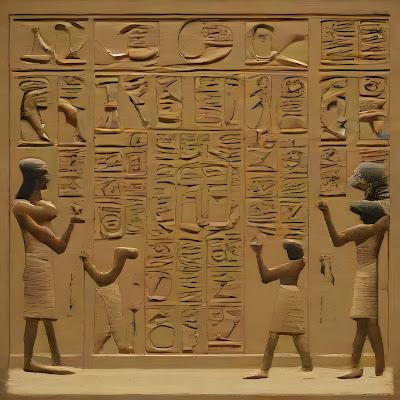Deciphering Lost Languages: Unlocking the Secrets of Ancient Civilizations
Introduction
The study of lost civilizations often leads us to explore the mysteries of ancient languages and scripts. These forgotten tongues hold the key to understanding the beliefs, practices, and achievements of civilizations long gone. The challenge of deciphering lost languages is a journey that has captivated linguists and historians for decades, as they strive to unlock the secrets of our shared past.
In this article, we'll dive into the world of deciphering lost languages, examining notable cases and the methods used by researchers to crack ancient codes.
The Quest to Decipher Ancient Scripts
The Rosetta Stone and Egyptian Hieroglyphs
One of the most famous breakthroughs in deciphering lost languages is the Rosetta Stone, which played a crucial role in decoding Egyptian hieroglyphs. Discovered in 1799, the stone features inscriptions in three scripts: hieroglyphic, demotic, and Greek. Linguist Jean-François Champollion successfully used the stone to unlock the secrets of hieroglyphs in the 1820s, shedding light on the rich history of ancient Egypt.
Linear B: Cracking the Mycenaean Script
Another significant achievement in the field of deciphering lost languages is the decoding of Linear B, the script of the Mycenaean civilization. In the 1950s, Michael Ventris, an architect and amateur linguist, successfully deciphered Linear B as an early form of Greek. This discovery provided insight into the culture and administration of the Mycenaean civilization.
The Enigma of the Indus Script
The Indus Valley civilization, one of the world's earliest urban societies, remains an enigma due to its undeciphered script. Found on seals and pottery, the Indus script has baffled researchers for years. Various theories on its language and origin exist, but the lack of a known script or bilingual inscriptions has made it challenging to unlock its secrets.
Techniques and Challenges in Deciphering Lost Languages
Comparative Linguistics
Researchers often use comparative linguistics to find similarities between lost languages and known languages, identifying patterns and shared roots. This method can provide clues to help decipher scripts and understand ancient texts.
Contextual Analysis
Contextual analysis involves examining the context in which inscriptions are found, such as the location, artifacts, and cultural practices associated with the script. This approach helps researchers make educated guesses about the content and purpose of the text.
Statistical Methods and AI
In recent years, statistical methods and artificial intelligence (AI) have been employed to assist in deciphering lost languages. By analyzing patterns in known scripts and comparing them to unknown texts, researchers can generate hypotheses and test them using modern technology.
Conclusion
The quest to decipher lost languages is an ongoing and challenging endeavor that holds the potential to reveal untold stories of ancient civilizations. From the breakthroughs with the Rosetta Stone and Linear B to the ongoing mystery of the Indus script, the journey to unlock these ancient tongues continues to captivate and inspire scholars around the world.
As researchers harness modern techniques and tools, the future may bring new discoveries that further illuminate our understanding of lost languages and the cultures they represent. Stay tuned for more insights into the fascinating world of lost civilizations.
Read Full Series related to this topic:
Lost civilizations

